- Help & FAQ

Traffic assignment: A survey of mathematical models and techniques
- Civil and Urban Engineering
- Center for Interacting Urban Networks
Research output : Chapter in Book/Report/Conference proceeding › Chapter
This chapter presents the fundamentals of the theory and techniques of traffic assignment problem. It first presents the steady-state traffic assignment problem formulation which is also called static assignment, followed by Dynamic Traffic Assignment (DTA), where the traffic demand on the network is time varying. The static assignment problem is shown in a mathematical programming setting for two different objectives to be satisfied. The first one where all users experience same travel times in alternate used routes is called user-equilibrium and another setting called system optimum in which the assignment attempts to minimize the total travel time. The alternate formulation uses variational inequality method which is also presented. Dynamic travel routing problem is also reviewed in the variational inequality setting. DTA problem is shown in discrete and continuous time in terms of lumped parameters as well as in a macroscopic setting, where partial differential equations are used for the link traffic dynamics. A Hamilton–Jacobi- based travel time dynamics model is also presented for the links and routes, which is integrated with the macroscopic traffic dynamics. Simulation-based DTA method is also very briefly reviewed. This chapter is taken from the following Springer publication and is reproduced here, with permission and with minor changes: Pushkin Kachroo, and Neveen Shlayan, “Dynamic traffic assignment: A survey of mathematical models and technique,” Advances in Dynamic Network Modeling in Complex Transportation Systems (Editor: Satish V. Ukkusuri and Kaan Özbay) Springer New York, 2013. 1-25.
| Original language | English (US) |
|---|---|
| Title of host publication | Advances in Industrial Control |
| Publisher | |
| Pages | 25-53 |
| Number of pages | 29 |
| Edition | 9783319692296 |
| DOIs | |
| State | Published - 2018 |
Publication series
| Name | Advances in Industrial Control |
|---|---|
| Number | 9783319692296 |
| ISSN (Print) | 1430-9491 |
| ISSN (Electronic) | 2193-1577 |
ASJC Scopus subject areas
- Control and Systems Engineering
- Automotive Engineering
- Aerospace Engineering
- Industrial and Manufacturing Engineering
Access to Document
- 10.1007/978-3-319-69231-9_2
Other files and links
- Link to publication in Scopus
- Link to the citations in Scopus
Fingerprint
- Mathematical Model Keyphrases 100%
- Traffic Assignment Keyphrases 100%
- Mathematical Techniques Keyphrases 100%
- Mathematical Modeling Mathematics 100%
- Variational Inequality Mathematics 100%
- Dynamic Traffic Computer Science 100%
- Travel Time Social Sciences 100%
- Dynamics Biochemistry, Genetics and Molecular Biology 100%
T1 - Traffic assignment
T2 - A survey of mathematical models and techniques
AU - Kachroo, Pushkin
AU - Özbay, Kaan M.A.
N1 - Publisher Copyright: © Springer International Publishing AG, part of Springer Nature 2018.
N2 - This chapter presents the fundamentals of the theory and techniques of traffic assignment problem. It first presents the steady-state traffic assignment problem formulation which is also called static assignment, followed by Dynamic Traffic Assignment (DTA), where the traffic demand on the network is time varying. The static assignment problem is shown in a mathematical programming setting for two different objectives to be satisfied. The first one where all users experience same travel times in alternate used routes is called user-equilibrium and another setting called system optimum in which the assignment attempts to minimize the total travel time. The alternate formulation uses variational inequality method which is also presented. Dynamic travel routing problem is also reviewed in the variational inequality setting. DTA problem is shown in discrete and continuous time in terms of lumped parameters as well as in a macroscopic setting, where partial differential equations are used for the link traffic dynamics. A Hamilton–Jacobi- based travel time dynamics model is also presented for the links and routes, which is integrated with the macroscopic traffic dynamics. Simulation-based DTA method is also very briefly reviewed. This chapter is taken from the following Springer publication and is reproduced here, with permission and with minor changes: Pushkin Kachroo, and Neveen Shlayan, “Dynamic traffic assignment: A survey of mathematical models and technique,” Advances in Dynamic Network Modeling in Complex Transportation Systems (Editor: Satish V. Ukkusuri and Kaan Özbay) Springer New York, 2013. 1-25.
AB - This chapter presents the fundamentals of the theory and techniques of traffic assignment problem. It first presents the steady-state traffic assignment problem formulation which is also called static assignment, followed by Dynamic Traffic Assignment (DTA), where the traffic demand on the network is time varying. The static assignment problem is shown in a mathematical programming setting for two different objectives to be satisfied. The first one where all users experience same travel times in alternate used routes is called user-equilibrium and another setting called system optimum in which the assignment attempts to minimize the total travel time. The alternate formulation uses variational inequality method which is also presented. Dynamic travel routing problem is also reviewed in the variational inequality setting. DTA problem is shown in discrete and continuous time in terms of lumped parameters as well as in a macroscopic setting, where partial differential equations are used for the link traffic dynamics. A Hamilton–Jacobi- based travel time dynamics model is also presented for the links and routes, which is integrated with the macroscopic traffic dynamics. Simulation-based DTA method is also very briefly reviewed. This chapter is taken from the following Springer publication and is reproduced here, with permission and with minor changes: Pushkin Kachroo, and Neveen Shlayan, “Dynamic traffic assignment: A survey of mathematical models and technique,” Advances in Dynamic Network Modeling in Complex Transportation Systems (Editor: Satish V. Ukkusuri and Kaan Özbay) Springer New York, 2013. 1-25.
UR - http://www.scopus.com/inward/record.url?scp=85047219067&partnerID=8YFLogxK
UR - http://www.scopus.com/inward/citedby.url?scp=85047219067&partnerID=8YFLogxK
U2 - 10.1007/978-3-319-69231-9_2
DO - 10.1007/978-3-319-69231-9_2
M3 - Chapter
AN - SCOPUS:85047219067
T3 - Advances in Industrial Control
BT - Advances in Industrial Control
PB - Springer International Publishing
A quasi-dynamic air traffic assignment model for mitigating air traffic complexity and congestion for high-density UAM operations
- August 2023
- Transportation Research Part C Emerging Technologies 154:104279

- Nanyang Technological University
- This person is not on ResearchGate, or hasn't claimed this research yet.

- The French Aerospace Lab ONERA

Abstract and Figures

Discover the world's research
- 25+ million members
- 160+ million publication pages
- 2.3+ billion citations
- Haochong Chen
- Xincheng Cao

- J ADV TRANSPORT
- Honghao Chen
- Xinping Zhu
- Tianxiong Zhang
- Tatiana Blinova
- Rakesh Kumar

- Y. Lakshmi Prasanna
- SENSORS-BASEL
- Zhiqiang Zhang
- TRANSPORT RES C-EMER

- Kin Huat Low
- Vu N. Duong
- J AIR TRANSP MANAG

- Carl Khalife
- Joseph Slim
- Panagiotis Angeloudis

- Daniel Delahaye

- Maxim Egorov

- Supatcha Chaimatanan
- TRANSPORT RES A-POL
- Christopher Decker

- Zhengyi Wang
- Recruit researchers
- Join for free
- Login Email Tip: Most researchers use their institutional email address as their ResearchGate login Password Forgot password? Keep me logged in Log in or Continue with Google Welcome back! Please log in. Email · Hint Tip: Most researchers use their institutional email address as their ResearchGate login Password Forgot password? Keep me logged in Log in or Continue with Google No account? Sign up
TrafficAssignment.jl
This package for the Julia Language does basically two tasks: (1) loading a network data and (2) finding a user equilibrium traffic pattern. See Traffic Assignment .
This will install LightGraphs.jl and Optim.jl , if you don't have them already.
To check if works
load_ta_network
This function loads a network data available in this TNTP github repository . The network name must match with the directory name in the TNTP repository.
The return value is of the TA_Data type, which is defined as
ta_frank_wolfe
This function implements methods to find traffic equilibrium flows: currently, Frank-Wolfe (FW) method, Conjugate FW (CFW) method, and Bi-conjugate FW (BFW) method.
References:
- Mitradjieva, M., & Lindberg, P. O. (2013). The Stiff Is Moving-Conjugate Direction Frank-Wolfe Methods with Applications to Traffic Assignment. Transportation Science , 47(2), 280-293.
Available optional arguments:
- method=:fw / :cfw / :bfw (default=:bfw)
- step="exact" / "newton" : exact line search using golden section / a simple Newton-type step (default=:exact)
- log=:on / :off : displays information from each iteration or not (default=:off)
- max_iter_no= integer value : maximum number of iterations (default=2000)
- tol= numeric value : tolerance for the Average Excess Cost (AEC) (default=1e-3)
For example, one may do:
The total system travel time can be simply computed as
Contributor
This package is written and maintained by Changhyun Kwon .
Required Packages
- AbstractTrees
- ArnoldiMethod
- ChainRulesCore
- ChangesOfVariables
- CodeTracking
- CommonSubexpressions
- DataStructures
- DataValueInterfaces
- DiffResults
- DocStringExtensions
- FixedPointNumbers
- FlameGraphs
- FoldingTrees
- ForwardDiff
- IndirectArrays
- InlineStrings
- InverseFunctions
- InvertedIndices
- IrrationalConstants
- IteratorInterfaceExtensions
- JuliaInterpreter
- JuliaSyntax
- LaTeXStrings
- LeftChildRightSiblingTrees
- LightGraphs
- LineSearches
- LogExpFunctions
- LoweredCodeUtils
- OrderedCollections
- SparseArrays
Used By Packages
No packages found.
Julia Packages
This website serves as a package browsing tool for the Julia programming language. It works by aggregating various sources on Github to help you find your next package.
By analogy, Julia Packages operates much like PyPI , Ember Observer , and Ruby Toolbox do for their respective stacks.
- Bahasa Indonesia
- Slovenščina
- Science & Tech
- Russian Kitchen
How Moscow fights traffic jams
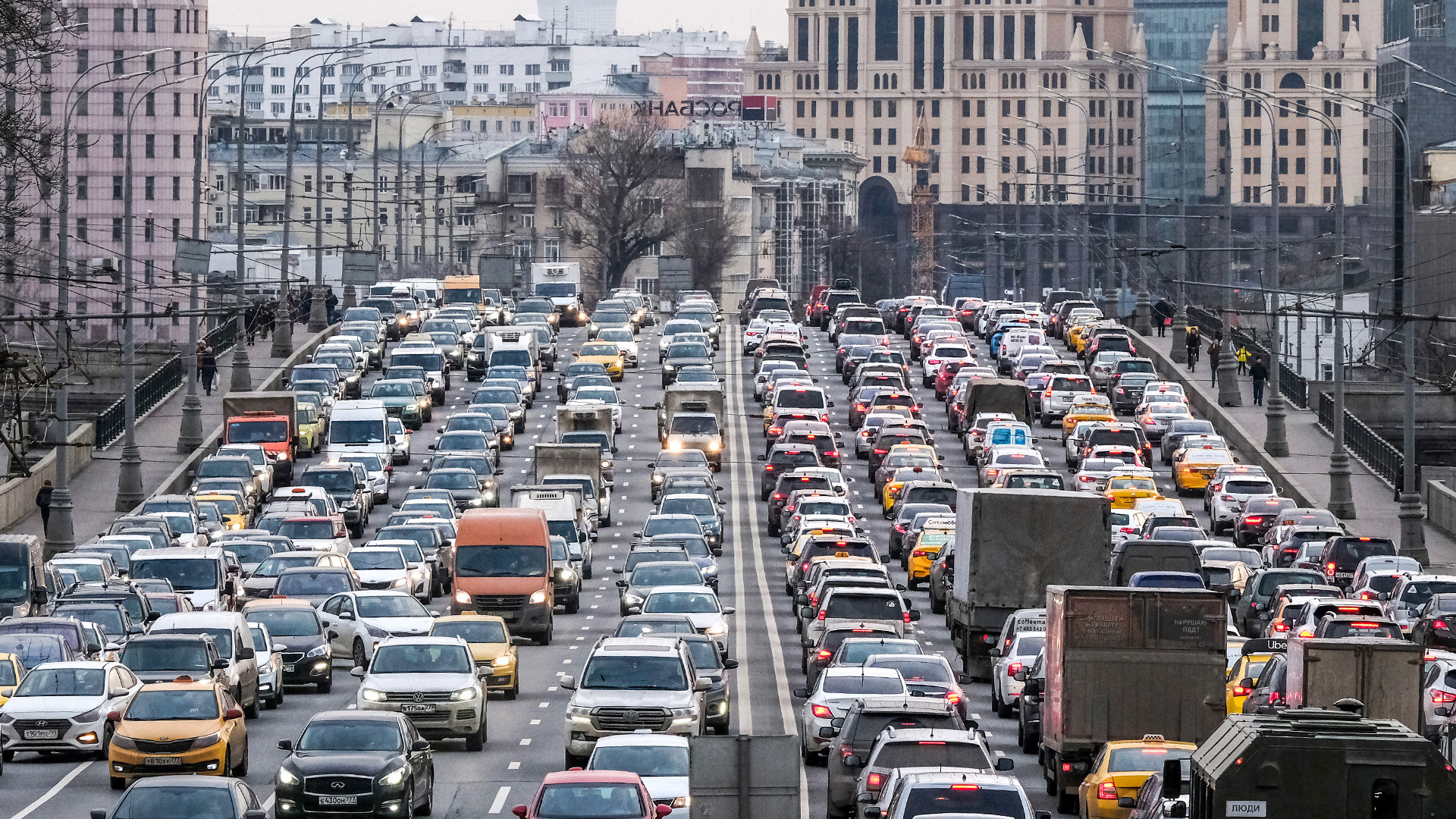
Cars slowly move along a bridge in traffic jam in central Moscow on March 6, 2020
“The streets were deserted, like in some post-apocalyptic movie. It was especially creepy in the center of Moscow, where all life had completely stopped,” is how Moscow driver Ruslan Seregin describes the roads in Moscow during the coronavirus pandemic in the spring of 2020. Back then, motorists could only get around with a special digital pass in the form of a QR code, obtained in advance by specifying the purpose of the trip using a special app or website. For the first time ever, Seregin got to enjoy near empty roads in Moscow.
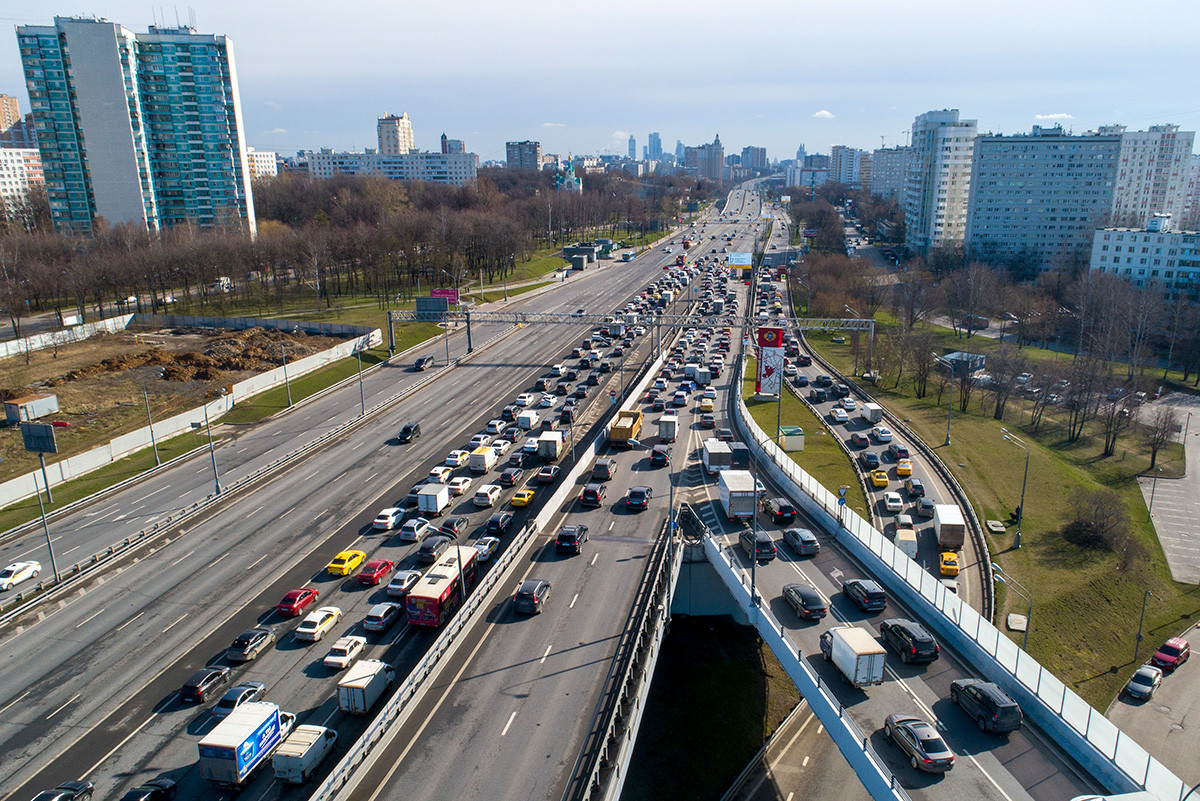
A traffic jam as police check IDs and passes of each person driving into Moscow at a checkpoint at the entrance to Moscow, Russia, Wednesday, April 15, 2020
This blissful state lasted from April 11 to June 1, 2020. With the lifting of the first lockdown restrictions, the number of vehicles on the streets soon approached pre-COVID levels and traffic jams that day jumped to a score of 6/10 on the Yandex traffic congestion scale.
At the end of 2020, Moscow and the surrounding region ranked first in the world by number of traffic jams, according to TomTom, a supplier of GPS navigation devices. Moscow has featured in the Top 10 cities with the largest traffic jams for the past decade, dropping to 13th place only once in 2015.
Road construction and repair
To combat traffic jams, every year Moscow builds new highways, roads and interchanges, as well as repairs and expands the old road network by at least 100 km annually, according to the website of the Moscow Urban Development and Construction Complex (MUDCC).
As a result, the share of congested road sections has decreased by 18% over the past ten years and the average travel time has decreased by nine minutes, according to the website.
From 2010 to 2020, more than 1,000 km of roads were built in Moscow, enough to relieve road congestion, stated Moscow Deputy Mayor Andrey Bochkarev in late 2020.
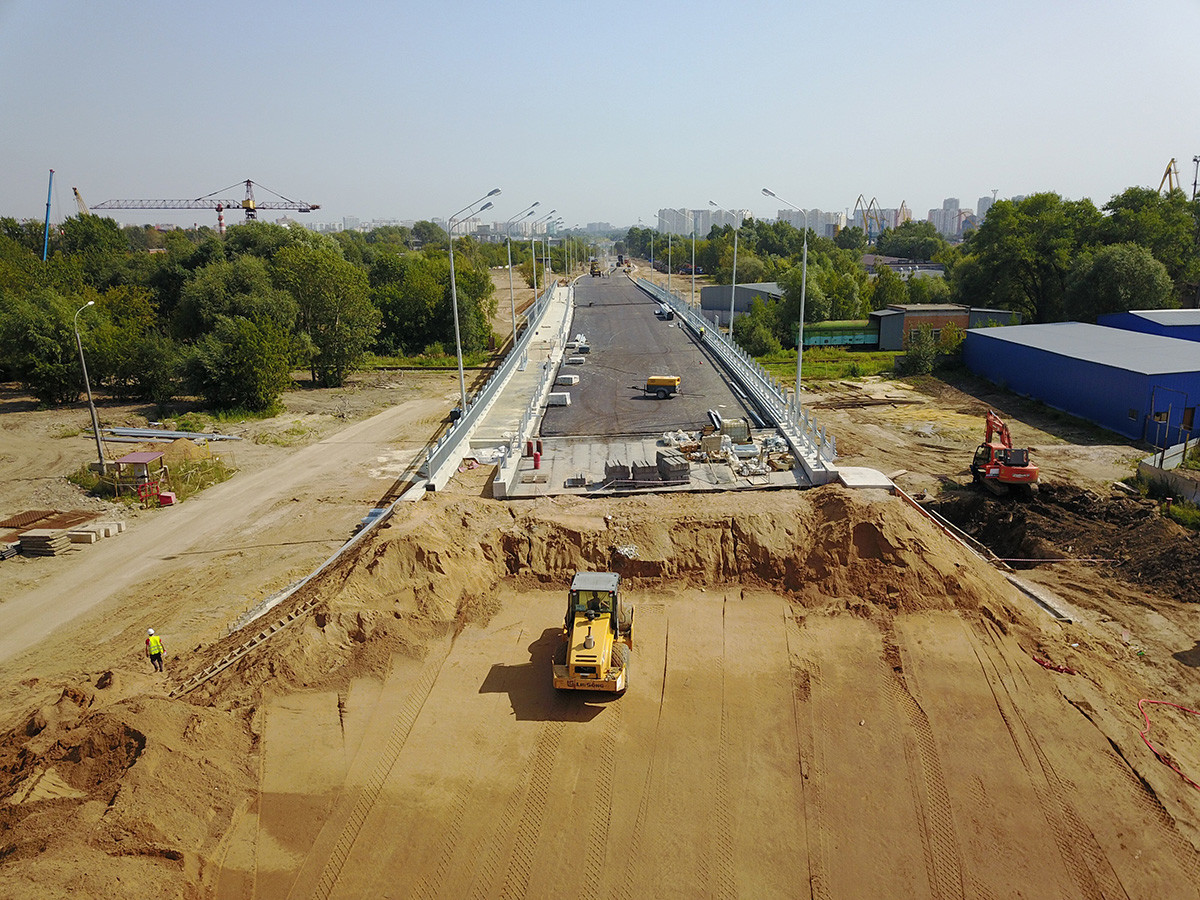
The final stage of the construction of the overpass between Yuzhnoportovaya Street and the 2nd Yuzhnoportovy Passage
“Despite the number of cars increasing annually by 250–300 thousand, our total traffic volume did not rise and Moscow ceased to be a global traffic jam leader. So our efforts were not in vain,” Bochkarev said .
Nevertheless, the constant building and reconstruction of new roads has temporarily increased the number of traffic jams in certain areas of Moscow, say local residents.
“Around Medvedkovo District, where I live, a lot of interchanges are being rebuilt and wherever I try to go, I get stuck in a traffic jam. Before, it took me 40 minutes to get where I needed to be, but now it’s an hour and a half. Not like during the pandemic — I really miss those times,” says photographer Anton Ukhanov.
Public transport development
Thirty-six-year-old Muscovite Valeria Dashkevich has used public transport only once in the past five years. That was in early April 2021. As she explains, she encountered overcrowded trains in the subway and buses stuck on gridlocked streets.
“I thought I’d get there faster than by car, but because the road I needed was blocked and I had to change buses, it took even longer. My fear of public transport will last another five years,” says Dashkevich.
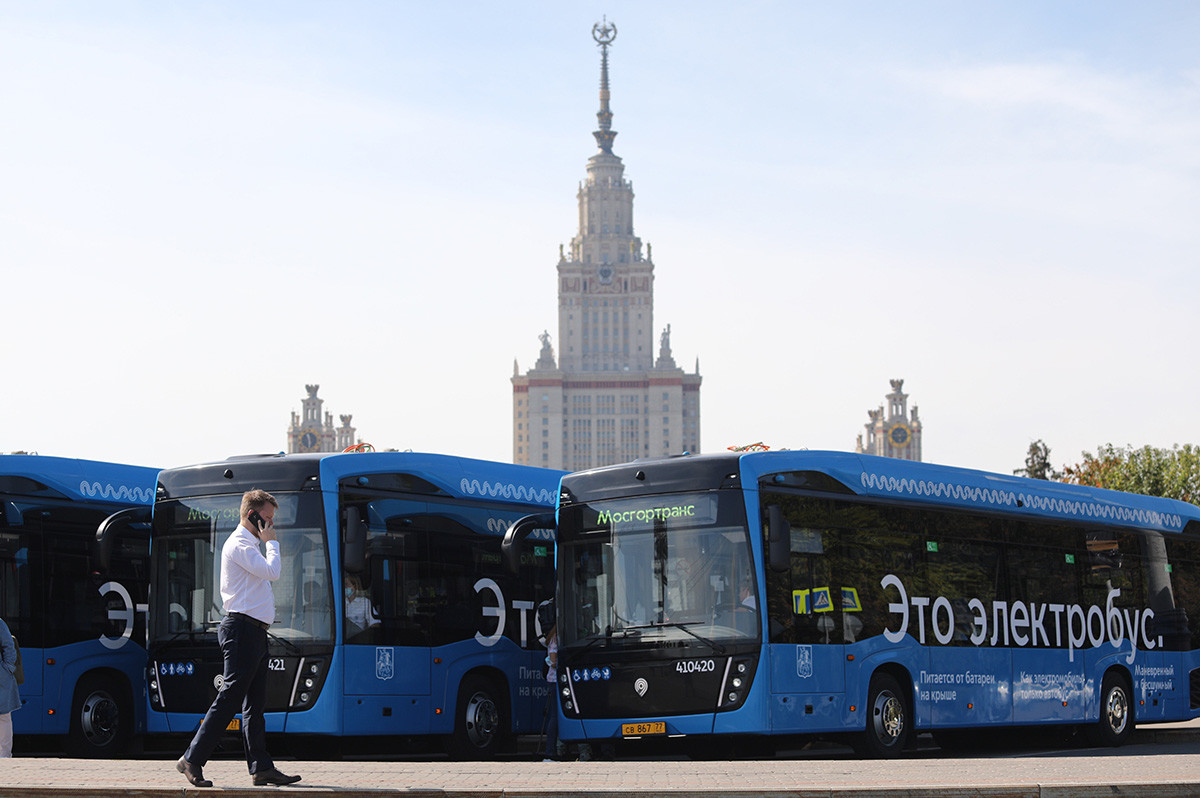
Electric bus
That said, the Moscow Department of Transport is actively developing the subway system: 56 new stations have been opened in Moscow since 2011, according to the MUDCC website. The new Big Circle Line is also being built. Set to consist of 31 stations, it should reduce any journey to 30 minutes, it is claimed on the same website.
In addition, a new overland rail transport line has appeared in Moscow — the Moscow Central Circle (MCC), plus new stations and services on existing commuter rail lines, known as the Moscow Central Diameters (MCD). The system is intended to help residents of Moscow Region to quickly reach and move around the city, hopping from one type of transport to another.
New routes are also being built for trams, buses, electric buses and trolleybuses — in Moscow there are more than 1,050 overland routes and more than 400 km of tram lines, reads the website of the mayor of Moscow.
A further 351 km of dedicated lanes for public transport have been built in Moscow. But, according to some Muscovites, they have not reduced the number of traffic jams at all.
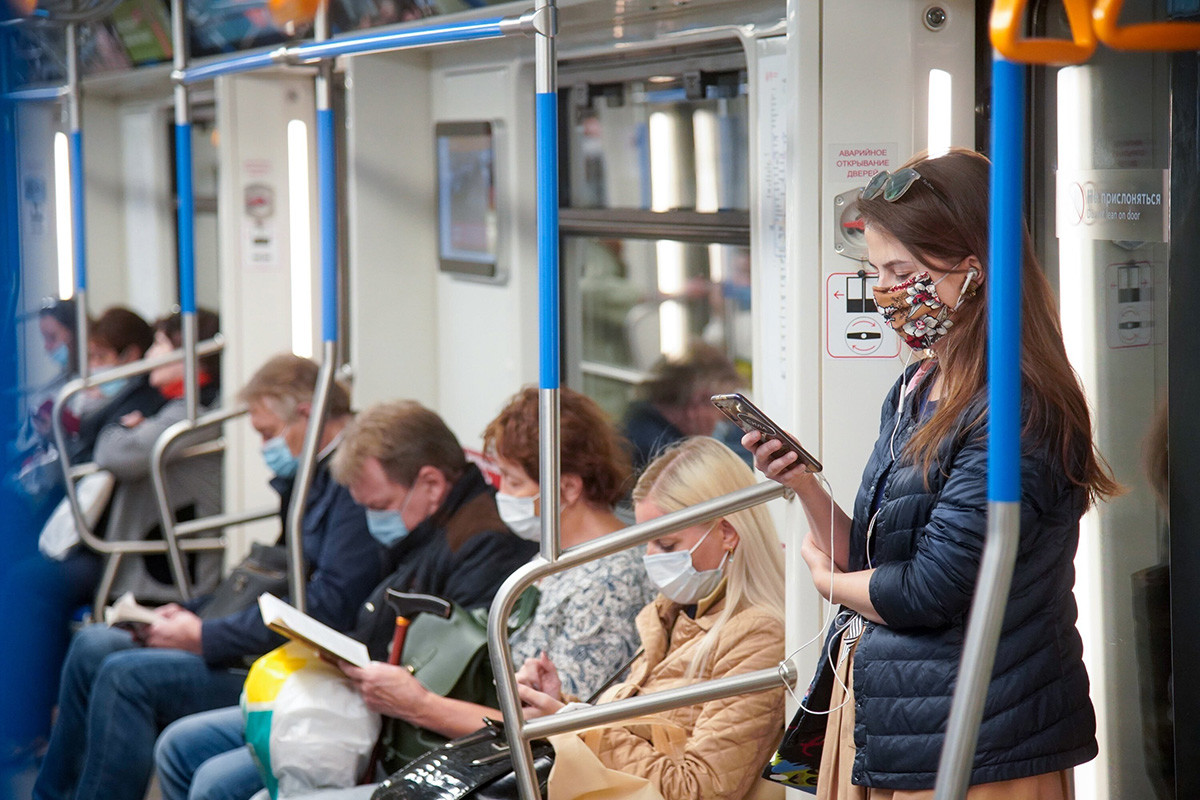
Mask mode in Moscow on October 6, 2020
“I have a car with a permit to drive in bus lanes. I work as a cab driver. Recently, in a traffic jam, a man of retirement age ran up to me and asked for help — his wife was ill and he couldn’t get to the hospital,” recalls driver Ruslan Seregin. “The hospital wasn’t far, just a couple of miles away. But even using the bus lane, it took me about 30 minutes. Thank God, I drove the woman to the hospital and she was able to get treatment.”
Other Moscow residents still are afraid to use public transport for fear of contracting COVID-19.
“I used to take the subway to the center and to work and the car for trips outside the city. Now I go everywhere by car. I only use the subway when it’s not rush hour and even then I feel uncomfortable — too many people coughing all around,” says Muscovite Andrei Sobolev, 35.
Toll parking and driver fines
In an attempt to rid the streets of “excess cars” and force Moscow residents to switch to public transport, the Mayor’s Office introduced a paid parking system back in 2012. The cost of parking varies from 40 to 380 rubles per hour (approx. $0.50–$5), depending on how busy the street is and the time spent using the parking lot.
Motorists face a fine of 5,000 rubles (approx. $65) for not paying for parking, and 3,000 rubles (approx. $39) for stopping in a public transport lane.
According to Moscow’s official parking website , in the first year that toll parking was introduced (that is, 2012–13), the average speed of traffic in the city increased by 12% and the number of cars using the Garden Ring Road (which encircles the heart of Moscow) fell by 25%.
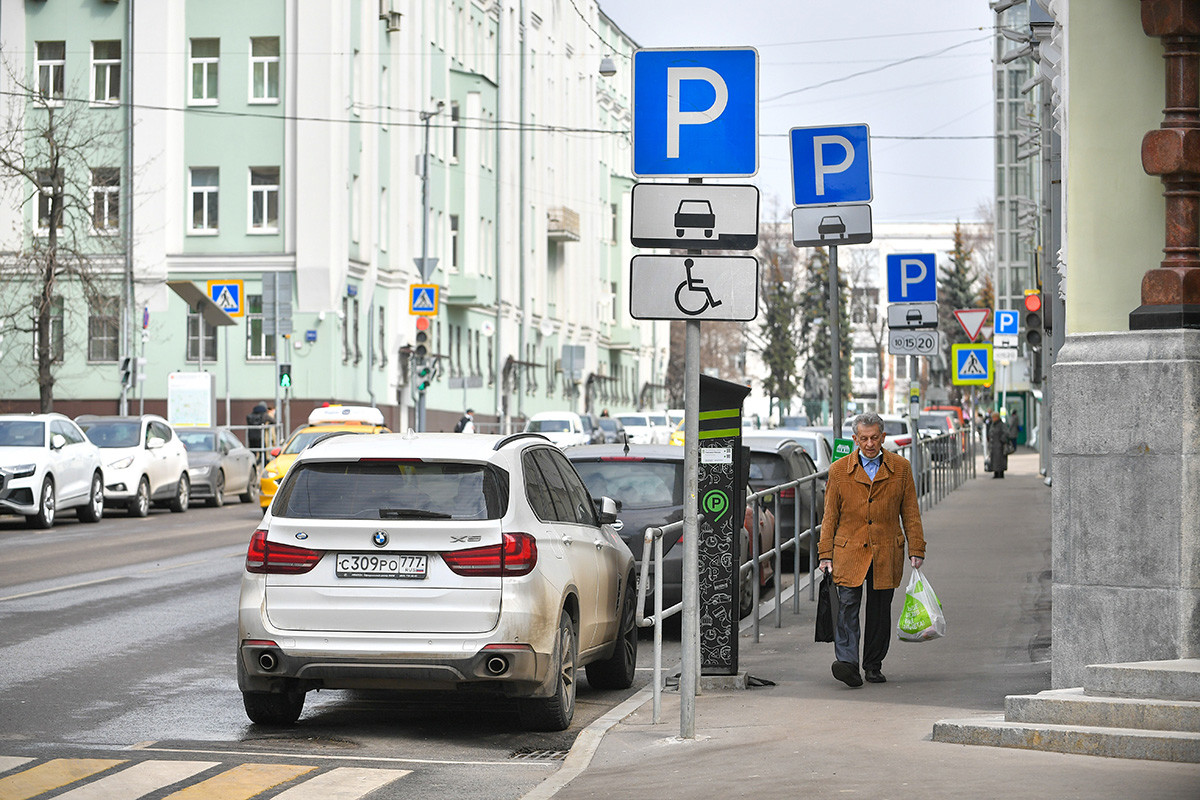
Paid parking in Moscow
Because of the high likelihood of fines and expensive parking, some Moscow residents have switched permanently to public transport, but their decision was also influenced by traffic jams.
“After the pandemic, traffic jams increased several fold and expensive parking spaces in central Moscow are no good to me. So, now I use the car only to get to the nearest subway station and, from there, I travel the rest of the way to work. Lately, even the journey from home to the subway has been taking an hour, although without traffic jams it’s no more than 15 minutes away,” complains Anastasia, a resident of Podolsk, a city near Moscow.

‘Traffic jams are good’
In November 2020, Moscow Mayor Sergei Sobyanin said that only fast public transport would motivate Muscovites to use their cars less and beat the traffic congestion problem.
“We already have millions of cars in Moscow and a million more get added every five years. There are so many cars there won’t be enough roads,” Sobyanin admitted.
Despite the growth in the number of private cars, the measures applied in Moscow to combat traffic are helping to slowly reduce the demand for private vehicles, according to Alexander Kulakov, director of the Center for Transport Modeling at the Faculty of Urban and Regional Development of the Higher School of Economics in Moscow.
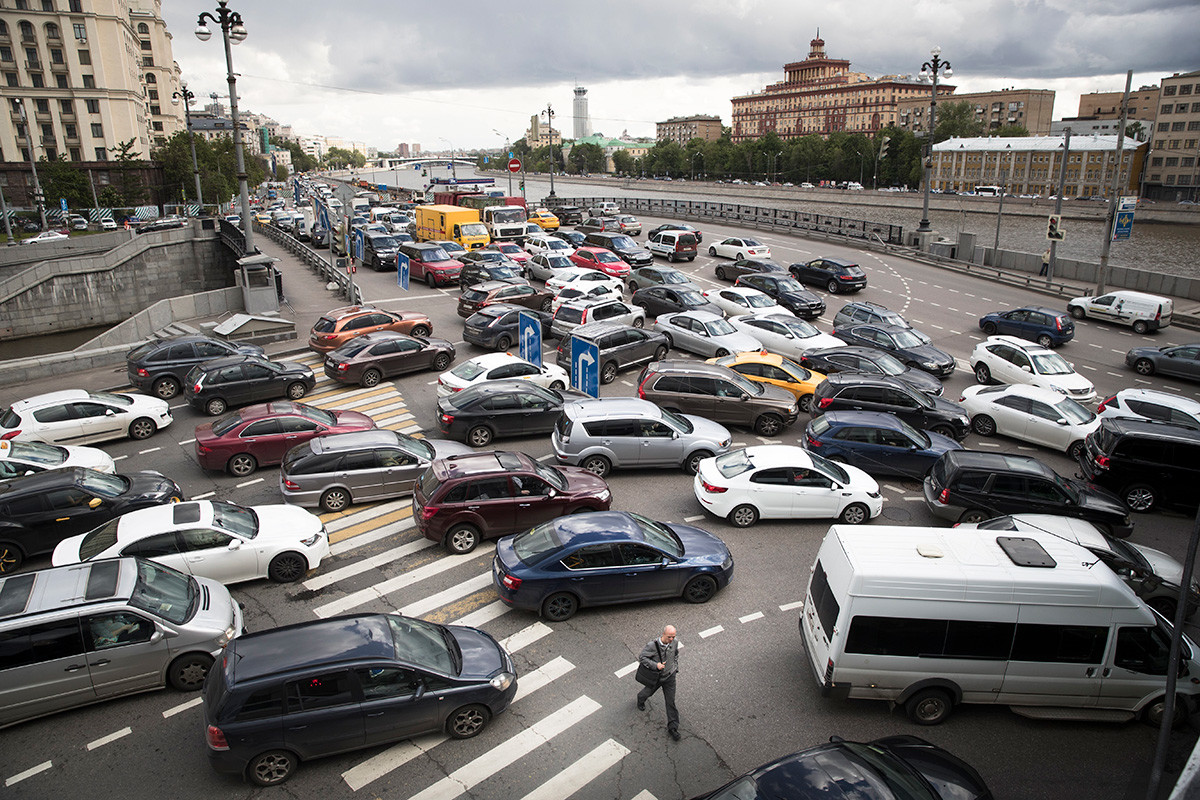
A man crosses a street during a traffic jam on the embankment of the Moskva River in downtown Moscow
“The methods used in Moscow and the surrounding region do work, but they never show good results in a short time, especially in conditions that are not conducive to reducing the use of personal transport. To further combat traffic jams in the region, we need to continue working to improve the connectivity of the road network and develop a network of high-speed public transport,” says Kulakov.
Ilya Varlamov, a well-known blogger and urbanist in Russia, agrees on the need to develop public transport, yet he is against expanding the road network. In his view, new roads only encourage Muscovites to buy cars, thereby creating additional traffic jams.
As he sees it, the primary cause of road congestion is drivers who violate the traffic rules, resulting in accidents and snarl-ups.
“You can build 100 new state-of-the-art highways, but if some f*ckers continue to break the rules, the jams will remain. There’s no proper driving culture in this country. <...> What to do with these f*ckers? <...> The only thing is to increase the fines for reckless behavior. <…> 5,000–10,000 rubles [$65–130]!” writes Varlamov on Instagram.
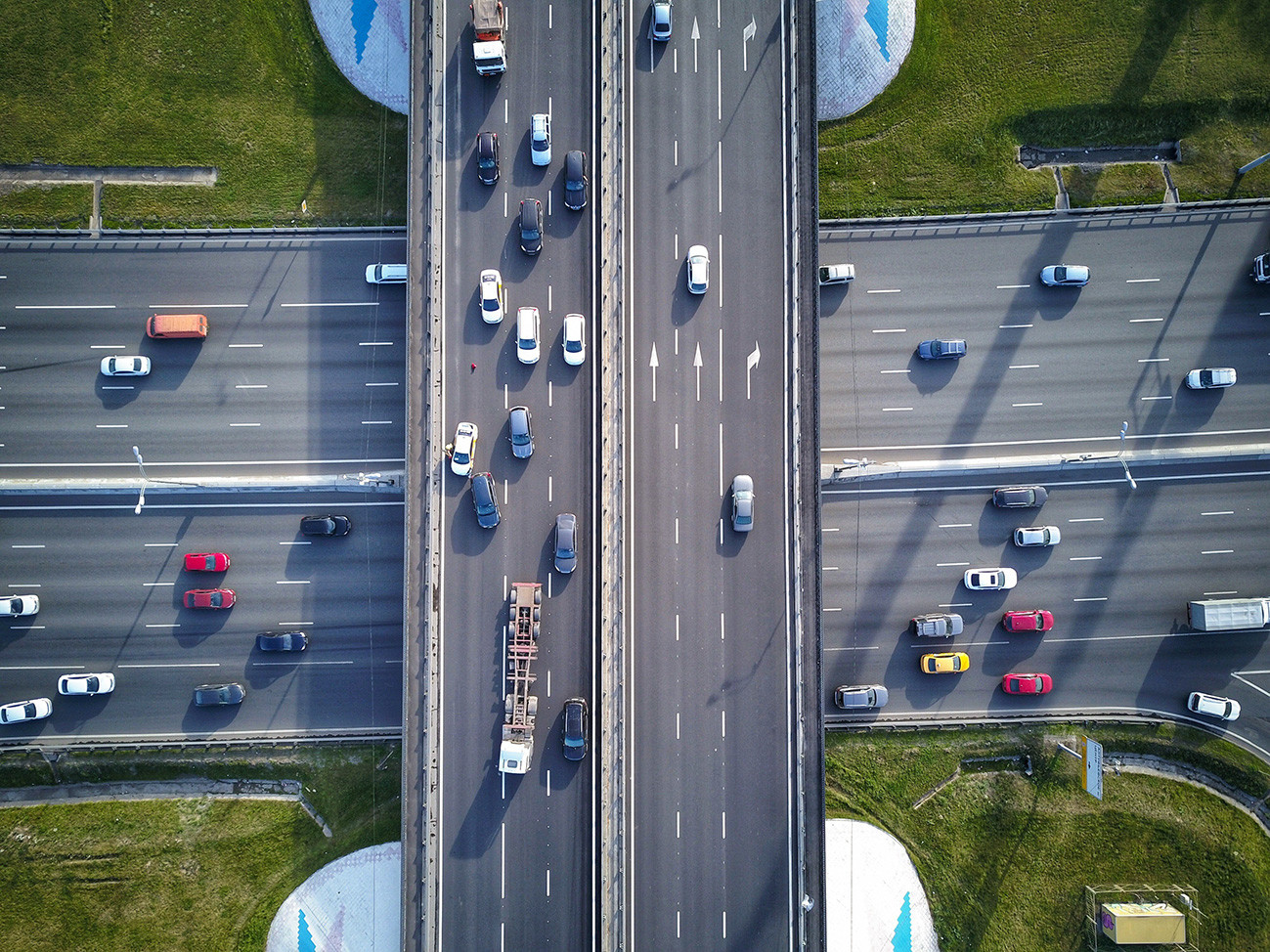
According to Alexander Shumsky, head of the Probok.Net expert center, Moscow topped the traffic congestion rating only because it was the first in the world to come out of lockdown. That said, measures are still needed to tackle the problem.
“We need to reduce the demand for private vehicles. That is the next stage of transport development that we have to complete. We have introduced toll-only parking, but there is no charge to drive into Moscow or certain areas of the city and no restrictions or tariffs based on the green classification of vehicles or regions,” explains Shumsky.
Nonetheless, the Telegram account of the Moscow Department of Transport also stated that road congestion in 2020 was down by 5%, year on year, and the mere fact of traffic jams during the pandemic is not a negative indicator.

Cars are stuck in a traffic jam on a bank of the Moskva River outside the Kremlin, with the Christ the Savior Cathedral, left, in the background, in Moscow, Russia
“Moscow is the global leader in terms of traffic jams, but this time that’s a good thing. It always seemed like traffic congestion was a bad indicator. But in COVID-hit 2020, the opposite can be said to hold true. It means the city did not put life on pause <...> roads were open and public transport, albeit with severe restrictions, continued to operate,” wrote the department.
Russia Beyond sent a request for comment to the Moscow Department of Transport, but had not received a response at the time of publication.
If using any of Russia Beyond's content, partly or in full, always provide an active hyperlink to the original material.
to our newsletter!
Get the week's best stories straight to your inbox
- How Moscow is rescued from snow and ice every winter
- Russians fly from Moscow to Moscow - how come?
- Rave wake and Stalin’s speech: the most unusual events in the Moscow Metro
This website uses cookies. Click here to find out more.
Advertisement
Traffic assignment in urban transportation network problem with emission constraints in China: a cooperative game theory
- Research Article
- Published: 03 May 2023
- Volume 30 , pages 69274–69288, ( 2023 )
Cite this article

- Shuqin Zhao ORCID: orcid.org/0000-0002-6629-0878 1 , 2 ,
- Linzhong Liu 1 &
- Ping Zhao 3
357 Accesses
Explore all metrics
Traffic assignment in urban transport planning is the process of allocating traffic flows in a network. Traditionally, traffic assignment can reduce travel time or travel costs. As the number of vehicles increases and congestion causes increased emissions, environmental issues in transportation are gaining more and more attention. The main objective of this study is to address the issue of traffic assignment in urban transport networks under an abatement rate constraint. A traffic assignment model based on cooperative game theory is proposed. The influence of vehicle emissions is incorporated into the model. The framework consists of two parts. First, the performance model predicts travel time based on the Wardrop traffic equilibrium principle, which reflects the system travel time. No travelers can experience a lower travel time by unilaterally changing their path. Second, the cooperative game model gives link importance ranking based on the Shapley value, which measures the average marginal utility contribution of links of the network to all possible link coalitions that include the link, and assigns traffic flow based on the average marginal utility contribution of a link with system vehicle emission reduction constraints. The proposed model shows that traffic assignment with emission reduction constraints allows more vehicles in the network with an emission reduction rate of 20% than traditional models.
This is a preview of subscription content, log in via an institution to check access.
Access this article
Subscribe and save.
- Get 10 units per month
- Download Article/Chapter or eBook
- 1 Unit = 1 Article or 1 Chapter
- Cancel anytime
Price includes VAT (Russian Federation)
Instant access to the full article PDF.
Rent this article via DeepDyve
Institutional subscriptions
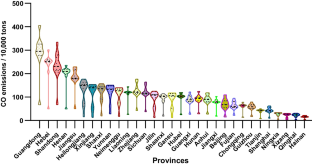
Similar content being viewed by others

A Game-Theoretic Approach to the Analysis of Traffic Assignment

A multi-objective model for cordon-based congestion pricing schemes with nonlinear distance tolls

Bridging the user equilibrium and the system optimum in static traffic assignment: a review
Explore related subjects.
- Artificial Intelligence
- Environmental Chemistry
Data availability
Not applicable.
Ahuja RK, Orlin JB, SPallottino, Scutella MG (2003) Dynamic shortest paths minimizing travel times and costs. Networks: An International Journal 41(4): 197-205
Aziz HA, Vukkusuri S (2012) Integration of environmental objectives in a system optimal dynamic traffic assignment model. Computer-Aided Civil Infrastructure Engineering 27(7):494–511
Article Google Scholar
Baykasoğlu A, Özbel BK (2021) Explicit flow-risk allocation for cooperative maximum flow problems under interval uncertainty. Oper Res 21(3):2149–2179
Google Scholar
Beckmann M, McGuire CB, Winsten CB (1956) Studies in the Economics of Transportation. New Haven, CT: Yale University Press
Chen J, Feng Q, Guo Q (2021) Multi-class freeway congestion and emission based on robust dynamic multi-objective optimization. Algorithms 14(9):266
Chen L, Yang H (2012) Managing congestion and emissions in road networks with tolls and rebates. Transp Res Pt B-Methodol 46(8):933–948
Dijkstra EW (1959) A note on two problems in connexion with graphs. Numer Math 1(1):269–271
Dreyfus SE (1969) An appraisal of some shortest-path algorithms. Oper Res 17(3):395–412
Ferguson EM, Duthie J, Travis WS (2012) Comparing delay minimization and emissions minimization in the network design problem. Comput-Aided Civ Inf 27(4):288–302
Floyd RW (1962) Algorithm 97: shortest path. Communications of the ACM 5(6):345
Frank M, Wolfe P (1956) An algorithm for quadratic programming. Nav Res Logis Q 3:95–110
Friesz TL, Han K, Liu H, Yao T (2013) Dynamic congestion and tolls with mobile source emission. Procedia Soc Behav Sci 80:818–836
Fukushima M (1984) A modified Frank-Wolfe algorithm for solving the traffic assignment problem. Transp Res Pt B-Methodol 18(2):169–177
Gopalakrishnan S, Granot D, Granot F, Sošić G, Cui H (2021) Incentives and emission responsibility allocation in supply chains. Manag Sci 67(7):4172–4190
Gusev VV (2020) The vertex cover game: application to transport networks. Omega 97:102102
Hadas Y, Gnecco G, Sanguineti M (2017) An approach to transportation network analysis via transferable utility games. Transp Res Pt B-Methodol 105:120–143
Hao J, Hatzopoulou M, Miller E (2010) Integrating an activity-based travel demand model with dynamic traffic assignment and emission models: implementation in the Greater Toronto, Canada, area. Transp Res Rec 2176(1):1–13
Heinold A (2020) Comparing emission estimation models for rail freight transportation. Transp Res Part D-Transport Environ 86:102468
Hissel D, Candusso D, Harel F (2007) Fuzzy-clustering durability diagnosis of polymer electrolyte fuel cells dedicated to transportation applications. IEEE Transactions on Vehicular Technology 56(5):2414–2420
Joulin A, Tang K, Li F (2014) Efficient image and video co-localization with frank-wolfe algorithm. Springer, European Conference on Computer Vision
Book Google Scholar
Kabadurmuş Ö, Erdoğan MS, Özkan Y, Köseoğlu M (2019) A multi-objective solution of green vehicle routing problem. Logistics, Supply Chain, Sustainability Global Challenges 10(1):31–44
Kimms A, Kozeletskyi L (2016) Shapley value-based cost allocation in the cooperative traveling salesman problem under rolling horizon planning. EURO J Transp Logist 5(4):371–392
Kitthamkesorn S, Chen A, Xu X, Ryu S (2016) Modeling mode and route similarities in network equilibrium problem with go-green modes. Netw Spat Econ 16(1):33–60
Kolak O, Feyzioğlu O, Birbil Şİ, Noyan N, Yalçındağ S (2013) Using emission functions in modeling environmentally sustainable traffic assignment policies. J Ind Manag Optim 9(2):341–363
Leblanc LJ (1975) An algorithm for the discrete network design problem. Transplant Sci 9(3):183–199
Li W, Pu Z, Li Y, Tu M (2021) How does ridesplitting reduce emissions from ridesourcing? A spatiotemporal analysis in Chengdu China. Transp Res Part D-Transport Environ 95:102885
Li Z, Lam W, Wong SC, Sumalee A (2012) Environmentally sustainable toll design for congested road networks with uncertain demand. Int J Sustain Transp 6(3):127–155
Li Z, Wang Y, Lam W, Sumalee A, Choi K (2014) Design of sustainable cordon toll pricing schemes in a monocentric city. Netw Spat Econ 14(2):133–158
Article CAS Google Scholar
Lissovoi A, Witt C (2013) Runtime analysis of ant colony optimization on dynamic shortest path problems. In: Proceedings of the 15th annual conference on Genetic and evolutionary computation. 1605–1612. https://doi.org/10.1145/2463372.2463567
Lozano S, Moreno P, Adenso-Díaz B, Algaba E (2013) Cooperative game theory approach to allocating benefits of horizontal cooperation. Eur J Oper Res 229(2):444–452
Ma R, Ban XJ, Szeto WY (2017) Emission modeling and pricing on single-destination dynamic traffic networks. Transp Res Pt B-Methodol 100:255–283
MEEPRC (2014) Technical guide for compilation of emission inventory of air pollutants from road motor vehicles (trial). Ministry of Ecology and Environment of the People’s Republic of China (MEEPRC). https://www.mee.gov.cn/gkml/hbb/bgg/201501/t20150107_293955.htm
MEEPRC (2019) The second biennial update report on climate change of the People’s Republic of China. Ministry of Ecology and Environment of the People’s Republic of China (MEEPRC). https://www.mee.gov.cn/ywgz/ydqhbh/wsqtkz/index_4.shtml
MEEPRC (2021) China mobile source environmental management annual report (2021). Ministry of Ecology and Environment of the People’s Republic of China (MEEPRC). https://www.mee.gov.cn/hjzl/sthjzk/ydyhjgl/202109/t20210910_920787.shtml
Mishra S, Welch TF (2012) Joint travel demand and environmental model to incorporate emission pricing for large transportation networks. Transp Res Rec 2302(1):29–41
Molina JC, Eguia L, Racero J, Guerrero F (2014) Multi-objective vehicle routing problem with cost and emission functions. Procedia Soc Behav Sci 160:254–263
Nagurney A (2000a) Congested urban transportation networks and emission paradoxes. Transp Res Part D-Transport Environ 5(2):145–151
Nagurney A (2000b) Alternative pollution permit systems for transportation networks based on origin/destination pairs and paths. Transp Res Part D-Transport Environ 5(1):37–58
Nagurney A, Zhang D (2001) Dynamics of a transportation pollution permit system with stability analysis and computations. Transp Res Part D-Transport Environ 6(4):243–268
Von Neumann J, Morgenstern O (1944) The theory of games and economic behavior. Princeton, Princeton University Press
Patil GR (2016) Emission-based static traffic assignment models. Environ Model Assess 21(5):629–642
Pu Z, Cui Z, Tang J, Wang S, Wang Y (2021) Multi-modal traffic speed monitoring: a real-time system based on passive Wi-Fi and bluetooth sensing technology. IEEE Internet Things J 9(14):12413–12424
Ren J, Gao B, Zhang J, Chen C (2020) Measuring the energy and carbon emission efficiency of regional transportation systems in China: chance-constrained DEA models. Math Probl Eng 2020:1–12
Rodriguez-Rey D, Guevara M, Linares MP, Casanovas J, Salmerón J, Soret A, Jorba O, Tena C, García-Pando CP (2021) A coupled macroscopic traffic and pollutant emission modelling system for Barcelona. Transp Res Part D-Transport Environ 92:102725
Rosenthal EC (2017) A cooperative game approach to cost allocation in a rapid-transit network. Transp Res Pt B-Methodol 97:64–77
Shapley LS (1953) A value for n-person games. Contributions to the Theory of Games 2: 307–324
Sharma S, Ukkusuri SV, Mathew TV (2009) Pareto optimal multiobjective optimization for robust transportation network design problem. Transp Res Rec 2090(1):95–104
Sharma S, Mishra S (2011) Optimal emission pricing models for containing carbon footprints due to vehicular pollution in a city network. In Proceedings of the 90th Transportation Research Board Annual Meeting, Washington, DC
Sharma S, Mathew TV (2011) Multiobjective network design for emission and travel-time trade-off for a sustainable large urban transportation network. Environ Plann B Plann Des 38(3):520–538
Sharma S (2013) A study on effect on GHG emissions by addition of transit mode in existing road network and optimal emission pricing models for reducing carbon footprints. In Proceedings of the 90th Transportation Research Board (TRB) Annual Meeting, Washington, DC
Sharma S, Mishra S (2013) Intelligent transportation systems-enabled optimal emission pricing models for reducing carbon footprints in a bimodal network. J Intell Transport Syst 17(1):54–64
Szeto WY, Jaber X, Wong SC (2012) Road network equilibrium approaches to environmental sustainability. Transport Rev 32(4):491–518
Thapa R, Shrestha JK (2019) Optimal route computation for public transport with minimum travelling time & travel cost: a case study of Pokhara City. Tech J 1(1):79–86
Wang Y, Szeto WY, Han K, Friesz TL (2018) Dynamic traffic assignment: a review of the methodological advances for environmentally sustainable road transportation applications. Transp Res Pt B-Methodol 111:370–394
Wardrop JG (1952) Road paper. Some theoretical aspects of road traffic research. Proceedings of the institution of civil engineers 1(3):325–362
Yang H, Xu W, He B, Meng Q (2010) Road pricing for congestion control with unknown demand and cost functions. Transp Res Part C-Emerg Technol 18(2):157–175
Yin Y, Lawphongpanich S (2006) Internalizing emission externality on road networks. Transp Res Part D-Transport Environ 11(4):292–301
Zhang L, Long R, Chen H, Yang T (2018) Analysis of an optimal public transport structure under a carbon emission constraint: a case study in Shanghai. China Environ Sci Pollut R 25(4):3348–3359
Zhang S, Zhang Y (2018) A hybrid genetic and ant colony algorithm for finding the shortest path in dynamic traffic networks. Autom Control Comput Sci 52(1):67–76
Zhang X, Liu P, Li Z, Yu H (2013) Modeling the effects of low-carbon emission constraints on mode and route choices in transportation networks. Procedia Soc Behav Sci 96:329–338
Zheng B, Zhang Q, Borken-Kleefeld J, Huo H, Guan D, Klimont Z, Peters GP, He K (2015) How will greenhouse gas emissions from motor vehicles be constrained in China around 2030? Appl Energy 156:230–240
Download references
Acknowledgements
The authors would like to extend special thanks to the editor and the anonymous reviewers for their constructive comments and suggestions for improving the quality of this study.
This work was supported by National Natural Science Foundation of China (grant numbers 71671079 and 71361018).
Author information
Authors and affiliations.
School of Traffic & Transportation, Lanzhou Jiaotong University, 88 Anning Rd, Lanzhou, 730070, China
Shuqin Zhao & Linzhong Liu
School of Business Administration, Henan University of Animal Husbandry and Economy, 146 Yingcai St., Huiji District, Zhengzhou, 450053, China
Shuqin Zhao
Key Laboratory of Deep Underground Science and Engineering (Ministry of Education), School of Architecture and Environment, Sichuan University, 24 First Ring Rd, Chengdu, 610065, China
You can also search for this author in PubMed Google Scholar
Contributions
Conceptualization: Shuqin Zhao and Linzhong Liu; methodology: Shuqin Zhao; data curation: Shuqin Zhao and Ping Zhao; writing—original draft preparation: Shuqin Zhao; writing—review and editing: Linzhong Liu and Ping Zhao; supervision: Linzhong Liu.
Corresponding author
Correspondence to Shuqin Zhao .
Ethics declarations
Ethical approval.
Consent to participate
Consent for publication
Competing interests.
The authors declare no competing interests.
Additional information
Responsible Editor: Marcus Schulz
Publisher’s note
Springer Nature remains neutral with regard to jurisdictional claims in published maps and institutional affiliations.
Rights and permissions
Springer Nature or its licensor (e.g. a society or other partner) holds exclusive rights to this article under a publishing agreement with the author(s) or other rightsholder(s); author self-archiving of the accepted manuscript version of this article is solely governed by the terms of such publishing agreement and applicable law.
Reprints and permissions
About this article
Zhao, S., Liu, L. & Zhao, P. Traffic assignment in urban transportation network problem with emission constraints in China: a cooperative game theory. Environ Sci Pollut Res 30 , 69274–69288 (2023). https://doi.org/10.1007/s11356-023-27108-9
Download citation
Received : 06 November 2022
Accepted : 15 April 2023
Published : 03 May 2023
Issue Date : June 2023
DOI : https://doi.org/10.1007/s11356-023-27108-9
Share this article
Anyone you share the following link with will be able to read this content:
Sorry, a shareable link is not currently available for this article.
Provided by the Springer Nature SharedIt content-sharing initiative
- Urban traffic
- Traffic assignment
- Cooperative game theory
- Shapley value
- Vehicle emissions
- Emission constraints
- Find a journal
- Publish with us
- Track your research

IMAGES
VIDEO
COMMENTS
Significance of traffic assignment. Represents the "basic" level of what we mean by "traffic conditions". Essential to make planning, operational, renewal, and policy decisions. Provides "feedback" to trip distribution and mode split steps of the 4-step model. Provides input to assess and influence energy and environmental impacts.
Route assignment, route choice, or traffic assignment concerns the selection of routes (alternatively called paths) between origins and destinations in transportation networks.It is the fourth step in the conventional transportation forecasting model, following trip generation, trip distribution, and mode choice.The zonal interchange analysis of trip distribution provides origin-destination ...
Wellposedness The objective function for the optimization problem given by Eq. () is a smooth convex function (as the Hessian matrix of the second derivatives \(\nabla ^2(x)\) is positive definite), and the feasible region for the optimization problem is convex.Because of these two conditions there exists a unique solution of the user-equilibrium optimization problem.
The types of traffic assignment models are all-or-nothing assignment, incremental assignment, capacity restraint assignment, user equilibrium assignment (UE), stochastic user equilibrium assignment (SUE), system optimum assignment (SO), etc. ... These constraints naturally hold the point that minimizes the objective function. These equations ...
TRAFFIC ASSIGNMENT NPTEL May 7, 2007 and total ows from 1 to 2 is given by. q12 = 12 Since the shortest path is Link 1 all ... These constraints naturally hold the point that minimizes the objective function. These equations state user equilibrium principle.The path connecting O-D pair can be divided into two categories : those carrying the ...
Step 1: Compute the resulting travel times and reassign traffic. Step 2: Now, begin to reassign using weights. Compute the weighted travel times in the previous two loadings and use those for the next assignment. The latest iteration gets a weight of 0.25 and the previous gets a weight of 0.75. Step 3.
2.2 Multi-objective traffic assignment. For multi-objective traffic assignment (MTA) it is now assumed that network users' route choice does not depend on a single cost function, but instead on multiple cost functions \(\bar{c}^{1},\ldots,\bar{c}^{p}\).An example with two cost functions is a transportation network where we assume that an individual's choice is determined by travel time ...
Section 3.1 introduces the assignment problem in transportation as the distribution of traffic in a network considering the demand between locations and the transport supply of the network. Four trip assignment models relevant to transportation are presented and characterized. Section 3.2 covers traffic assignment to uncongested networks based ...
ASSIGNMENT. Trip generation and mode-destination models give total highway traffic demand between a specified origin and a destination by mode. Knowing this, the final step in the sequential approach to travel demand and traffic forecasting, route choice, can be addressed. The result of the route choice decision will be traffic flow (usually ...
The purpose of this paper is to present an efficient (at least for moderate size networks) traffic assignment algorithm, where it is assumed that the link traveling costs are known increasing functions of the link flows, and no explicit capacity constraint is imposed on the links. Section 1 introduces.
When solving the traffic assignment problem, analysts assign the vehicles into the street network in such a way as to minimize a defined objective function. The objective function could be related to travel time, travel cost, air pollution, etc. The traffic assignment problem is an optimization problem that
It first presents the steady-state traffic assignment problem formulation which is also called static assignment, followed by Dynamic Traffic Assignment (DTA), where the traffic demand on the network is time varying. The static assignment problem is shown in a mathematical programming setting for two different objectives to be satisfied.
This objective function is the statement of the User Optimization Principle by Wardrop1. 1 Wardrop, J.G., 1952. Some Theoretical Aspects of Road Traffic Research, Proceedings, Institute of Civil Engineers, Part II, Vol. 1, pp. 325-378. To accomplish this integration, we leave t he equilibrium assignment model intact, changing only the form of ...
the resulting Kuhn-Tucker conditions give rise to an equilibrated assignment in which flows are shared among the set of paths Kpq between each O/D pair according to a logit distribution, and where path costs are determined as functions of the assigned flows. The objective function is defined to be
Ottawa Network Results. Figure 4 shows the system travel time results for each of the four traffic assignment scenarios as a function of the 0-D demand ratio used. A number of trends are present that would be expected given. TRANSPORTATION RESEARCH RECORD 1443.
Abstract. Multi-objective equilibrium models of traffic assignment state that users of road networks travel on routes that are efficient with respect to several objectives, such as travel time and toll. This concept provides a general framework for modelling traffic flow in tolled road networks. We present the concept of time surplus ...
3.2 Adding ridesharing prices to an elastic demand traffic assignment problem. In the elastic demand traffic assignment problem, the objective function consists of two components: the sum of the integrals of the congestion cost over all arcs and the sum of the integrals of the utility function over all OD pairs.
The proposed algorithm significantly reduces the value of the objective function by (32.20±0.29)% in 143.47±3.74 seconds at the 95% confidence interval of 100 experiments, far better compared to ...
This function implements methods to find traffic equilibrium flows: currently, Frank-Wolfe (FW) method, Conjugate FW (CFW) method, and Bi-conjugate FW (BFW) method. References: Mitradjieva, M., & Lindberg, P. O. (2013). The Stiff Is Moving-Conjugate Direction Frank-Wolfe Methods with Applications to Traffic Assignment.
The traffic assignment problem (TAP) is one of the key components of transportation planning and operations. It is used to determine the traffic flow of each link of a transportation network for a given travel demand based on modeling the interactions among traveler route choices and the congestion that results from their travel over the network (Sheffi 1985).
According to the city's traffic management center, in 2013 the average speed on eight of Moscow's 10 outbound routes either increased or fell insignificantly by 1-3 kilometers per hour (0.62-1.9 ...
To combat traffic jams, every year Moscow builds new highways, roads and interchanges, as well as repairs and expands the old road network by at least 100 km annually, according to the website of ...
Traffic assignment in urban transport planning is the process of allocating traffic flows in a network. Traditionally, traffic assignment can reduce travel time or travel costs. ... The objective function (4) represents the utility of the sub-coalitions, which can be obtained according to Eq. . Table 4 shows the prediction process of the total ...